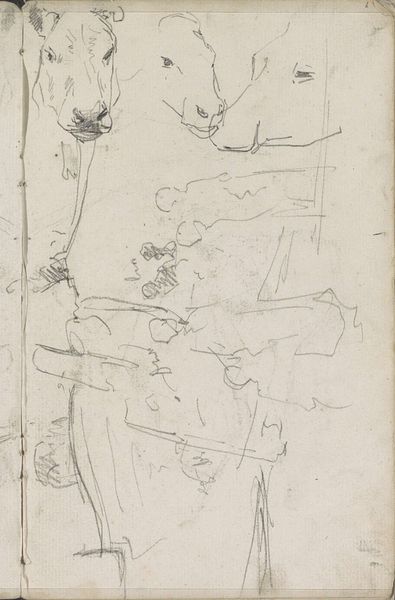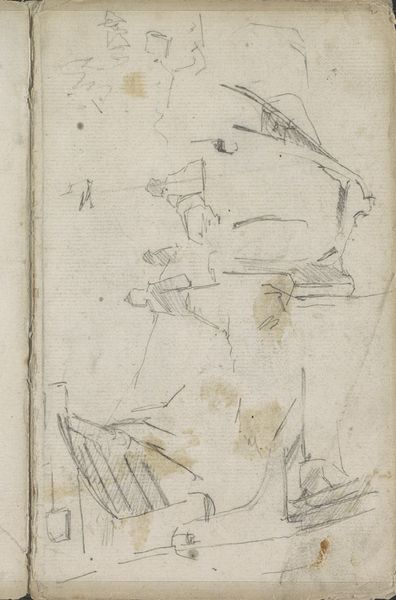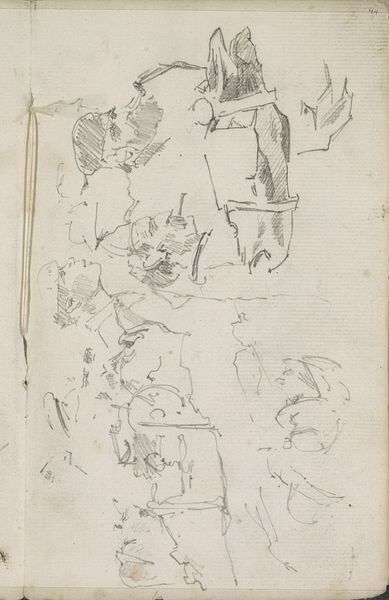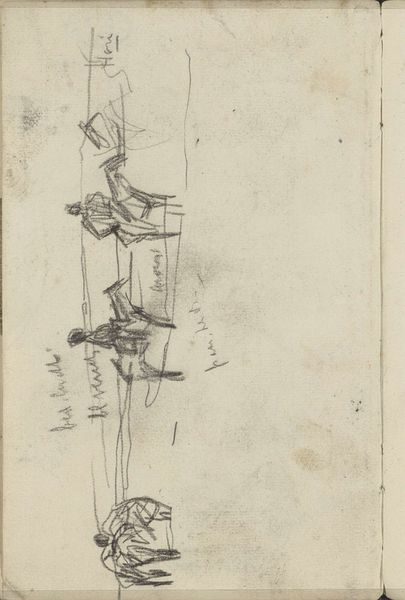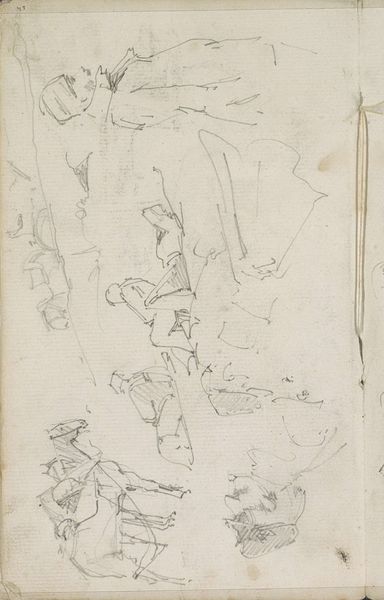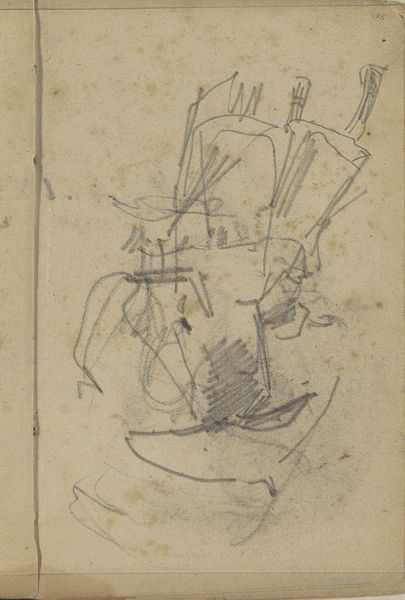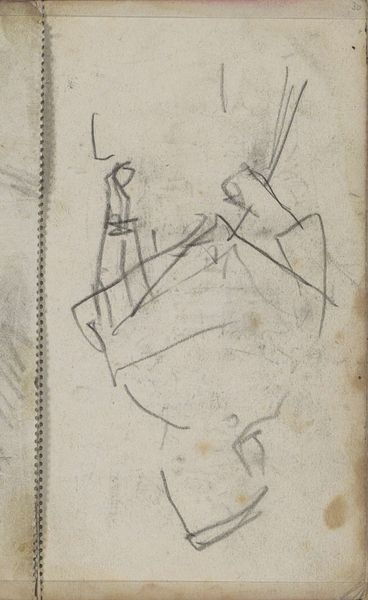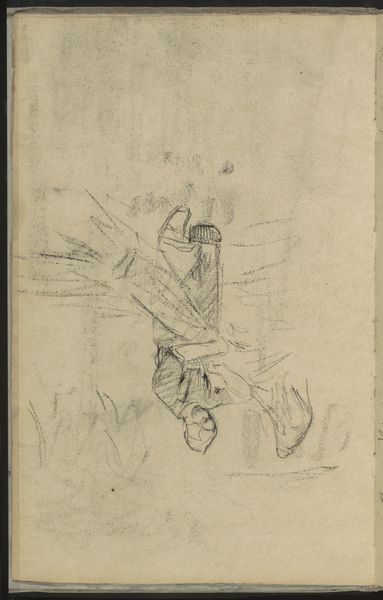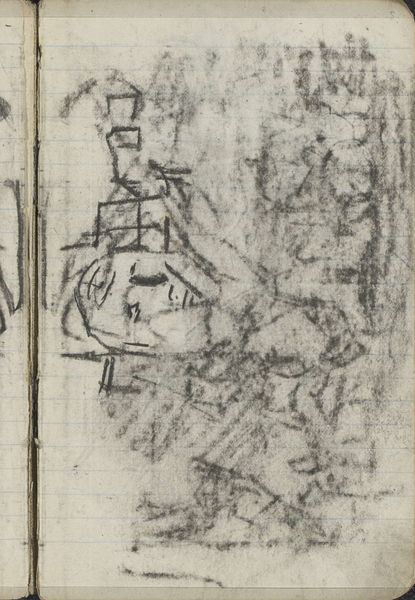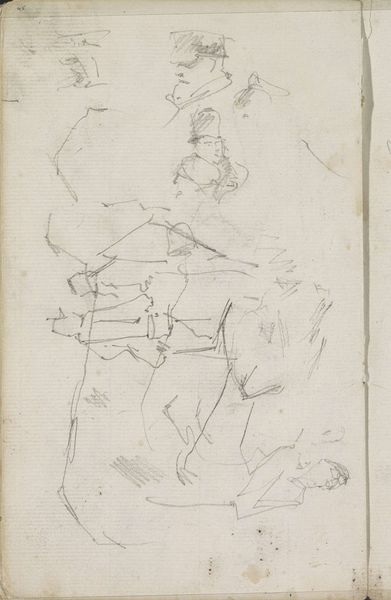
#
toned paper
#
light pencil work
#
quirky sketch
#
pencil sketch
#
sketch book
#
personal sketchbook
#
ink drawing experimentation
#
pen-ink sketch
#
horse
#
sketchbook drawing
#
sketchbook art
Copyright: Rijks Museum: Open Domain
Curator: Before us is George Hendrik Breitner's "Gezadeld Paard," or "Saddled Horse," created between 1880 and 1882. It's currently held at the Rijksmuseum. Editor: It has the immediacy of a quickly captured moment. I'm drawn to the lightness of touch; those pencil lines create a powerful impression with incredible efficiency. Curator: Breitner, known for documenting Amsterdam's street life, often used sketchbooks. The work itself embodies a sort of artistic labor and reflects Breitner's dedication to capturing reality. Editor: The lines coalesce just enough to define form and space, it also reminds of Japanese sumi-e ink wash painting in terms of style and composition. But tell me, considering it’s just a quick sketch, what sort of audience was he considering while making the work? Curator: Considering this piece comes from a personal sketchbook, the primary audience would most likely have been himself, or possibly a close friend or fellow artist with whom he shared his process. This practice allows us a candid glimpse into his work... Editor: Perhaps, he’s workshopping how he could translate fleeting street scenes into his bigger canvasses, a step removed from observation? I can feel a sense of underlying construction, almost architectural. Curator: Absolutely. One might view this sketch not only as a preliminary exercise but also as a commodity in its own right. A way for the artist to test different pictorial arrangements but ultimately, produce artworks to be sold or shown. Editor: So you think Breitner saw the sketchbook page as an extension of the formal salon tradition but reframed on the scale of everyday experience? Curator: Precisely. It challenges a fixed boundary between the academic and everyday. By producing these sorts of 'drafts,' Breitner effectively turns work and labor into a form of high art that would normally reside only in traditional painting and sculpture. Editor: It shows that art, even in its most nascent stage, holds an undeniable aesthetic power and, on a more theoretical note, exposes labor conditions of representation, perhaps? Well, that gives me a lot to consider about the status of “works in progress”... Curator: It’s fascinating how much such a simple work can tell us about artmaking, the relationship of labor, and the artistic moment.
Comments
No comments
Be the first to comment and join the conversation on the ultimate creative platform.
